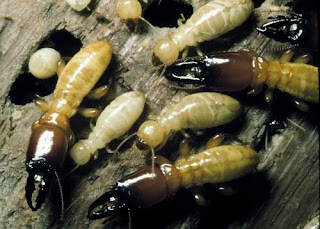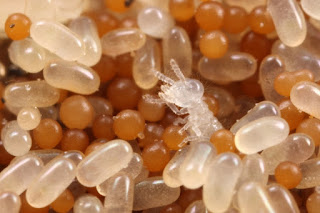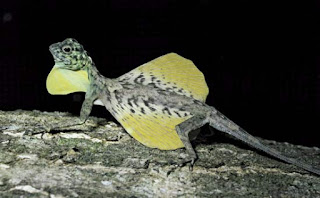Butterflyfish are a group of tropical marine fish of the family Chaetodontidae brightly colored; flag fish and coral fish are also included in this family. Most are found in coral reefs in the Pacific, Indian and Atlantic, butterfly fish consists of about 120 species in 10 generations. A number of species pairs in the Indian and Pacific oceans, members of the genus are large, Chaetodon, and their taxonomy is often felt confused by what species of this genus are considered a species or subspecies. A recent study using data from DNA sequencing to answer many of these questions. Many subgenerasi also been proposed to divide Chaetodon, and now it becomes clear how the genus should be divided if it desired.
Butterfly looks like a small version of the fish injel (Pomacanthidae), but unlike injel fish, butterflyfish preoperkulum not have spines on the gill cover. Some members of the genus Heniochus like Moorish Idol (Zanclus cornutus) from the family monotipik Zanclidae. Among the "Perciformes" which parafiletik, injel fish may not be too far related to butterflyfish, whereas Zanclidae seem more distant.
Description and ecology.
Butterfly fish are generally small, mostly 12 to 22 cm in length. The largest species, striped butterflyfish and the saddle butterflyfish, C. ephippium, grows up to 30 cm. Her name refers to a light-colored body and figured prominently in many species, with a touch of black, white, blue, red, orange, and yellow. But some ordinary colored species. Many butterfly that 'eye spots' in his side and dark bands that pass through their eyes, similar to the pattern seen in the wings of a butterfly. Flat round body is easily recognizable in the abundance of coral reef life, so that people think that the striking color was intended for interspecies communication. Butterfly butterfly fish dorsal fin is not divided, rounded tail fin or appear truncated but not branched.Generally active during the day and are often located in the shallow water depth of less than 18 m (although some species down to 180 m), butterfly generally tied to specific habitat range. Butterflyfish coral eaters are generally territorial, form mating pairs and their own claim ownership over coral. In contrast, eating zooplankton form the group of large numbers of species. At night, butterfly hiding among the corals and crevices and show different body colors from color during the day.
Their color also makes fish butterflyfish popular aquarium fish. However, many species eat corals, polyps and anemones. This poses a problem in most reef aquarium where delicate balance must be maintained. Therefore, the species is maintained at a hobby or a common food species specialist zooplankton eaters.
Butterfly fish is a fish that spawn pelagic, ie they produce a lot of eggs that float which later became part of the plankton, drifting drift until hatch. Her son through a stage called tholichthys, where the body of the fish covered pascalarva large slab of bone that extends from the head. The bone slab disappear when they grow up. Phase protected such slab was only seen in one other fish families, scat (Scatophagidae).
Taxonomy, systematics and evolution.
Name familia butterfly fish comes from the Ancient Greek word Chaite ("Hair") and odontos ("teeth"). This refers to the rows of teeth-like brush in his mouth.Chaetodontidae can be divided into two lineages that may be considered as subfamilia. However this is not finished, and the subfamily Chaetodontinae name not be used because he is a relic of a time when Pomacanthidae and Chaetodontidae combined in Chaetodontidae as one family. Therefore, Chaetodontinae now considered a junior synonym of Chaetodontidae. In any case, one lineage Chaetodontidae (in the modern sense) consists of a butterfly "typical" around Chaetodon, while others combine the fish genus flag and coral fish. Because "Perciformes" very parafiletik, the exact relationship of Chaetodontidae overall less known.
The fossil record of this little group of fish. This is due mainly to the fact that they are limited to staying in the reef where the carcass is eaten by scavengers, offset by excessive growth of coral, even if they were fossilized likely sooner or later erosion will destroy their fossils. However, there Pygaeus, very basal fossils from the Eocene epoch-middle end of Europe, dating from the Bartonian 40-37 million years ago. So Chaetodontidae may come from middle-early Eocene. Molecular clock combined with the evidence given Pygaeus allows placement of the initial separation between the two major lineages until late-middle Eocene, along with several other fossils, allowing it to conclude that most of the living genus may now be different at the end of the Paleogene 23 million years ago.
Generation.
Line-fish coral fish flag can be further divided into two groups; this may be considered Tribus but not yet officially named. Genera listed sequentially or based phylogenetic calculated, from the most ancient to the youngest:Flag fish / coral fish line 1:
AmphichaetodonCoradion
Chelmon
Chelmonops
Flag fish / coral fish line 2:
ForcipigerHemitaurichthys
Heniochus
Johnrandallia Nalbant 1974 (including Pseudochaetodon)
Butterflyfish "typical" may consist of more genera; Chaetodon see article for details:
Chaetodon (including Parachaetodon and Roa)
Prognathodes (sometimes incorporated into Chaetodon).
Know the Moorish Idol fish By Easy.
Who does not know the fish moorish idol? Fish that are well known everywhere as a beautiful ornamental fish exquisite. Moorish idol fish has become a trend among lovers of ornamental fish aquarium fish because it has its own beauty both in terms of shape, shelter, color, size and many more that makes this fish to be excellent ornamental fish lovers. Now therefore the author here will discuss moorish idol fish in full in this short article to the reader all in order to know more again on this fish.For some people Indonesia called butterfly fish. Butterfly fish are fish that the environment is in shallow tropical seas. Usually these fish are in depths of less than 18 meters because there are corals which became the main food of these fish. Nonetheless, there are number of little fish that plunge to depths of 180 meters. Her life in the more shallow coral reefs make it a place of life. These fish have a body that is small between 12 to 22 cm. It draws from moorish idol fish are active they are often good for swimming to and fro or foraging in the form of zooplankton during the day only, while in the evening they will break. Striking colors and varied body is able to provide its own beauty especially if kept in an aquarium but it will be dangerous if your aquarium containing coral reefs because the fish will be eaten away by this.
Moorish idol fish could be an option as ornamental fish in your aquarium because of its beauty. The downside is that the fish will eat the coral reefs in the aquarium if you put it. It's enough just to be authors explain, hopefully article about moorish idol fish know this can be useful for you all who read it in general as well as helping you to keep this fish with both specific to the aquarium and ornamental fish hobbyists. Thank you for reading this article.
Written and posted by Bambang Sunarno. sunarnobambang86@gmail.com
author:
http://schema.org/Personal.
https://plus.google.com/105319704331231770941.
name: Bambang Sunarno.
http://primadonablog.blogspot.com/2015/06/do-you-know-angelfish.html
DatePublished: June 12, 2015 at 10:16
Tags : Angelfish.
Code : 7MHPNPADAEFW




















